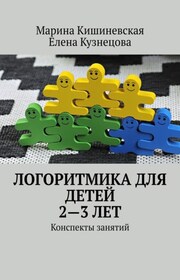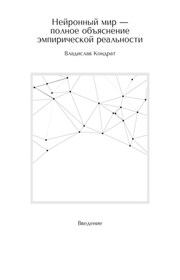Ancestral home of the Indo-Europeans С. Жарникова, А. Виноградов
Translator Алексей Германович Виноградов
Illustrator Алексей Германович Виноградов
© A. G. Vinogradov, 2025
© S. V. Zharnikova, 2025
© Алексей Германович Виноградов, translation, 2025
© Алексей Германович Виноградов, illustrations, 2025
ISBN 978-5-0065-4503-8
Created with Ridero smart publishing system
Introduction
In the modern world, the urgency of the problems of the ethnic history of the peoples of various regions of our planet is obvious. The growth of ethnic self-awareness, which has been observed everywhere in recent decades, is accompanied by an increase in interest in the historical past of peoples, in the transformations that each of them experienced in the course of its millennia-old formation. It became a spiritual need for a representative of a modern urbanized society to find the roots of his ethnic existence, to understand the diverse processes that led to the formation of that ethnocultural environment through which he perceives the world around him.
Since the origin and historical existence of the overwhelming majority of the peoples of our planet was associated with numerous migrations, movements to new habitats, causing changes in a number of cultural factors both among the alien people and the indigenous population, today, studying the ethnic history and culture of their people, we, of course, study them in the process of historical transformations and mutual influences of many tribes and peoples, which to one degree or another took part in their formation. Regional ethno-historical research in our time is becoming especially acute, since it is knowledge of the history of one’s own people that helps a modern person to free himself from the narrowness of the nationalist view of the world, to understand the role and significance of the contribution to the common treasury of human culture of all peoples, to realize that humanity is one.
Of course, it is impossible to solve the most difficult issues of ethnic history today without involving data from the most diverse fields of science. It is necessary to combine the efforts of ethnographers, historians, archeologists, linguists, folklorists, anthropologists, art historians, as well as paleobotanists, paleozoologists, paleoclimatologists and geomorphologists, since the development and formation of peoples took place in certain climatic zones, in certain landscapes, with a certain flora and fauna, and this must be taken into account.
Only if the questions posed by ethnic history will be given mutually supportive answers by all of the above branches of science, we can, with a certain amount of confidence, believe that we are close to a true understanding of a particular stage of the historical process. Therefore, at present, the search for an answer to any of the questions of the ethnic history of peoples cannot be considered legitimate without involving data from related sciences.
Viktor von Hen responded very interestingly in 1890 about Russian culture: «Russia is a country of eternal change and completely non-conservative, and a country of ultra-conservative customs, where historical times live, and does not part with rituals and representations, no matter how related. The modern culture here is an external gloss, it develops in a wave-like fashion, generates disgusting phenomena; what the Ancient Tradition has preserved with regard to goods, customs, tools, etc., has been invented solidly, rationally, wisely and skillfully used… They are not a young people, but an old one – like the Chinese. All their mistakes are not youthful flaws, but arise from asthenic exhaustion. They are very old, ancient, conservatively preserved all the oldest and do not refuse it. By their language, their superstition, their disposition, etc. you can study the most ancient times. " («Victor Hen, biography.» 1894.)
The book is a translation of the book by A.G. Vinogradov and S.V. Zharnikova «Происхождение индоевропейцев. Часть 1. Прародина индоевропейцев» in Russian. Published in 2013. All illustrations are taken from the book «Происхождение индоевропейцев. Часть 1. Прародина индоевропейцев».
Chapter 1 Problems of localization of the ancestral home of the Indo-Europeans
The problem of localization of the ancestral home of Indo-European peoples has been facing science for a long time. As early as the mid-18th century, the linguistic kinship of European peoples was noted, and in 1767 Kerdu pointed out the proximity of a number of European languages to Sanskrit, the language of the sacred texts of Ancient India «Vedas». «The decisive factor for the birth of Indo-European studies was the discovery of Sanskrit, acquaintance with the first texts on it and the enthusiasm that began in ancient Indian culture, the most striking reflection of which was the book by F. von Schleged» On the language and wisdom of Indians» (1808), – writes V. N. Toporov.
F. von Schlegel, the first to express the idea of a single ancestral home of all Indo-Europeans, placed this ancestral home on the territory of Hindustan, but this assumption was soon proved wrong, since before the arrival of the Aryan (Indo-European) tribes, India was inhabited by representatives of other goy language family and another one-time type – black Dravidians.
Assumed at different times as the ancestral home of the Indo-Europeans (today these are the peoples of 10 language groups: Indian, Iranian, Slavic, Baltic, Germanic, Celtic, Romance, Albanian, Armenian and modern Greek): India, the slopes of the Himalayas, Central Asia, Asian steppes, Mesopotamia, Near and Middle East, Armenian Highlands, territories from Western France to the Urals between 60° and 45° N, territory from the Rhine to the Don, Black Sea-Caspian steppes, steppes from the Rhine to the Hindu Kush, areas between the Mediterranean and Altai, in the Western Europe – at present, for one reason or another, most researchers reject it.
Among the hypotheses formulated in recent years, I would like to dwell in more detail on two: V. A. Safronov, who proposed in his monograph Indo-European ancestral home the concept of three Indo-European ancestral homelands – in Asia Minor, the Balkans and Central Europe (Western Slovakia), and T. V. Gamkrelidze and Vyach. V. Ivanov, who owns the idea of the Near-Asian (or rather, located on the territory of the Armenian Highlands and adjacent areas of Western Asia) ancestral home of the Indo-Europeans, detailed and argued by them in the fundamental two-volume book «Indo-European language and Indo-Europeans».
V. A. Safronov, addressing the work of N. D. Andreev, emphasizes that on the basis of the Early Indo-European (hereinafter RIE) vocabulary, it can be concluded that «the Early Indo-European society lived in cold places, maybe in the foothills, in which there were no large rivers, but small rivers, streams, springs; rivers, despite the rapid the flow was not an obstacle; they were crossed by boats.
In winter, these rivers froze, and in the spring they flooded. There were swamps… The climate of the «RIE» ancestral homeland was probably sharply continental with severe and cold winters, when the rivers froze, strong winds; stormy sleep with thunderstorms, heavy snowmelt, river spills, hot, dry summers, when the grass was dry, there was not enough water.»
The early Indo-Europeans had early phases of agriculture and cattle breeding, although hunting, gathering and fishing did not lose their significance. Among the tamed animals are a bull, a cow, a sheep, a goat, a pig, a horse and a dog that guarded the herds. V. A. Safronov notes that: «Horseback riding was practiced by the early Indo-Europeans: which animals traveled around, it’s not clear, but the goals are obvious: taming.» Agriculture was presented in a hoe and razor-fire form, the processing of agricultural products was carried out by grinding grain.
The early Indo-European tribes lived settled; they had different types of stone and flint tools, knives, shelters, scrapers, axes, adzes, etc. They exchanged and traded. In the early Indo-European community, there was a difference in childbirth, taking into account the degree of kinship, and juxtaposition of friends and foes.
The role of the woman was very high. Particular attention was paid to the «progeny generation process», which was expressed in a number of root words that passed into the Early Indo-European language from the boreal parent language.
In the early Indo-European society, a paired family stood out, management was carried out by leaders, and there was a defensive organization. There was a cult of fertility associated with zoomorphic cults; there was a developed funeral rite.
From the foregoing, V. A. Safronov concludes that the ancestral home of the early Indo-Europeans was in Asia Minor. He notes that such an assumption is the only possible, because: «Central Europe, including the Carpathian basin, was occupied by the glacier.»
However, paleoclimatology data indicate something else. At the time in question, during the final stage of the Valdai glaciation (the chronological framework of which was established from 11,000 to 10,500 years ago), the nature of the vegetation cover of Europe, although it was different from the modern one, Arctic tundra with birch-spruce woodland, low-mountain tundra and alpine meadows were common in Central Europe, not a glacier. Sparse forests with birch-pine stands occupied most of Central Europe, and steppe vegetation predominated on the Great Middle Danube Lowland and in the southern part of the Russian Plain. Paleogeographers note that in southern Europe the influence of ice cover was not felt, especially in the Balkans and Asia Minor, where the influence of the glacier was not felt at all. Time to which the culture of Asia Minor Chatal Gayuk belongs, connected by V. A. Safonov with the early Indo-Europeans, marked by the warming of the Holocene. Already 9780 years ago, elms appeared in the Yaroslavl region, 9400 years ago linden in the Tver region, and oaks in the Leningrad region 7790 years ago. Moreover, the presence of a cold climate in Asia Minor is unlikely. Here I would like to refer to the conclusions of L. S. Berg and G. N. Lisitsina, made at different times, but, nevertheless, not refuting each other. So L. S. Berg in his work «Climate and Life» (1947) emphasized that the climate of the Sinai Peninsula has not changed over the past 7 thousand years and that here and in Egypt, «if there had been a change, it would rather be towards an increase, not a decrease in precipitation.» He noted that:" Blankengorn believed that in Egypt, Syria and Palestine, the climate in general remains constant and similar to the current one since the end of the pluvial period; the end of the last Blankenghorn refers to the beginning of the interglacial era» (130—70 thousand BC). In a 1921 paper, Blankenghorn writes that «From the Riesz-Wurm interglacial (mousterien of Western Europe) to the present (in these territories), the climate is dry desert, and in the north a semi-desert climate similar to the modern one, interrupted by short humid times corresponding to Wurm glaciation.» G. N. Lisitsina, who writes in 1970, comes to similar conclusions: «The climate of the arid zone in the 10—7I millennia BC is not much different from the modern one.» We have no reason to believe that the climate of the West of Asia Minor, where daphne, cherry, barb are currently growing aris, maquis, calabrian pine, oak, hawthorn, hmelegrab, ash, white and spiny astragalus, animals like mongoose, gyneta, jackal, porcupine, mouflon, wild donkey, hyena, bats and locusts also live, and not every snow falls year, snow cover, as a rule, is not formed», in 8—7 thousand BC so different from the modern one so that it could be similar to the harsh ancestral home of the early Indo-Europeans, which is being reconstructed based on their vocabulary.



